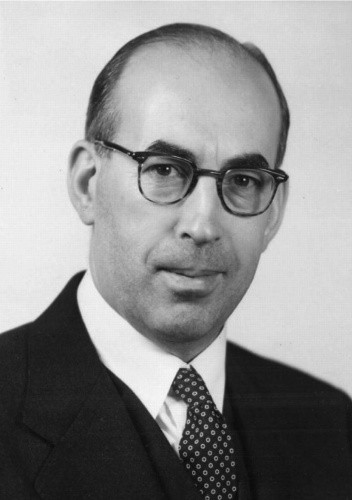Good company according to Philip Fisher. Several rules for investing in value
Philip Fisher is another seasoned advocate of value investing. However, he is a unique figure, as his attention was largely focused on companies of dynamic development, which often came from industries with high growth rates. His colleagues often indicate in the descriptions of their approach to action that it is worth looking for sectors that are boring but stable. Fisher is an example of an investor that deviates a bit from this strategy, but you can discover an amazing treasure trove of knowledge about the methods of getting to know the company (and we are not talking about financial analysis only).
Fisher's interest in the markets began at a very young age and quite by accident. It appeared after hearing a conversation between his grandmother and uncle. As he later commented, he was delighted with the opportunity to buy shares in the future profits of any company he chose.
Management comes first

Philip Fisher
In his very young career, Philip had a hard time. The family did not support his desire to develop in this direction, considering it as hazard. Even as a teenager, he earned a small amount by trading company securities. Fisher's father - a doctor, repeatedly persuaded him to choose a different career path due to the risk taken by the young investor. On the other hand, looking at Philip's actions, one can very quickly draw a simple conclusion that he was by nature not inclined to take risks without seeing a greater purpose.
One of Fisher's “tailors” was recognition and understanding of the company. He acquired this feature remarkably well and developed it while studying at the business school at Stanford University. First-year students, together with the professor, visited various enterprises in the San Francisco Bay area once a week. Thanks to detailed observations, the possibility of asking numerous questions for the company's management and consulting the answers with the professor, young Fisher learned to recognize well-run companies. Products or innovative services are worthless, practically until the appropriate person deals with their extensive promotion and sale.
My favorite way of obtaining information about a company was visiting a store or a place where it sells its services or products. Asking sellers about the most recommended products (in different companies from the same industry) often gave a clear result, in which one company from a given sector usually had the best opinions.
Hence, Fisher's philosophy of investing, which assumes that investment activities cannot be undertaken solely on the basis of analyzes and reports. The best insight in the industry (i.e. information gathering) can be heard from the people who work in it and necessarily have first-hand information.
Let go of the charms of the market square
The years 1928-1929 are one of the most recognizable dates among investors. In August 1929, Fisher produced an unusual report that predicted that the financial markets would be hit by a big bear market within six months. However, while his speculations on the subject were correct, he amassed several thousand dollars with the intention of buying cheap stocks that have not yet experienced any increases in the recent time. As he later recalled this situation, he "fell under the charm of the market" and after 1932 the investment was practically worthless. What lesson did he learn from this? Among other things, he assumed that a low price compared to historical profits is not a guarantee of security or value of the company, and thus the success of the investment.
READ: Investing in simple business models by Warren Buffett
Watch out for innovation
Fisher was interested in the companies of Fr. large and well-targeted research potential. He repeatedly emphasized that the diversification of expenditure in terms of intangible assets is so large that sometimes it is not tantamount to expenditure on science and development of innovation. An educated and conscious workforce plays a huge role in this process, treating the process of technology development as a result of the activities of a whole mass of people, and not individual individuals - geniuses and loners. It is the leader who is responsible for creating favorable working conditions for a wide group of experts.
Fisher emphasizes that he also pays a lot of attention to contacts and building internal cooperation between the research and development department and the sales and production department. Lack of coordination between them, in his opinion, significantly reduces the potential of the process due to e.g. too high production costs of a given innovation or lack of interest in a given good on the market.
The last important item to note is awareness of senior management in the field of research. In these matters, they should focus on long-term cooperation with the best experts, creating a research environment in which this activity will not be limited. 'Capricious' and short-term innovation development policies tend to have a negative and demoralizing effect on researchers who have to abandon long-term, profitable research at the expense of management's express whim. Companies often give up larger, several-year-long projects only for reasons such as the lack of specific prospects for increasing profit "already", from the implemented project.
How to evaluate managers?
Philip Fisher was only interested in enterprises that were run by an excellent management team. He has developed a unique ability to evaluate them. The quality of people employed at higher management levels was determined by four key features that guided Fisher. These included: business competences, integrity, excellent relations at managerial levels, excellent relations with employees, Efficiency in the implementation of current tasks, long-term planning, honesty, decency.
A "certain" peculiarity
A good company is first and foremost one (which occurs with many investors looking to invest in value) that consistently performs better than other representatives in the same industry. Simply put, it has a stable competitive advantage built on valuable products or services. It is the title "certain" special feature that will be able to provide the company with above-average profitability results in the foreseeable future.
There are many kinds of sources of competitive advantage. One of the more interesting things that Fisher was interested in was economies of scale. Already at the outset, he emphasizes that the scale has one key disadvantage, which particularly affects huge enterprises. We are talking about the difficulties at higher levels of management in making decisions based on competent and complete information.
This industry dominance does not necessarily translate into a production advantage. Most of it focuses on effective marketing. According to Philip, a good “atmosphere” associated with the product is the key to promotional success.
Another category of competitive advantage are patents. Here, however, a large margin of caution should be kept due to the fact that they usually cover a small fraction of technological know-how. When a company has an advantage built solely on them, Fisher has given them a wide berth as patents are a sign of weakness. Why? For their "protection" does not last forever. In his opinion, strictly technological companies should focus on other areas of building a competitive advantage, and treat patents as a bonus to their activity.
Sometimes it also happens that customers reach for the company's product from the vending machine. These companies were especially valued by Fisher because of the reputation and relatively large size of the brand. The most important feature is that the brand of the products is seen as synonymous with the product itself.
Summation
Fisher's strategy is extensive, so there will surely be articles related to a more detailed analysis of its individual elements. Finally, it is worth adding what Philip avoided when investing in companies. Above all, he advises do not delete companies that make mistakes, and use a low price to buy them. He points to one of the main mistakes that cannot be made by an investor constantly entering and exiting the market and trying to recover from a bad investment. Warns against excessively diversified portfolioby advising to limit ourselves to as many enterprises as we are able to observe. Moreover, like his predecessors, he advises avoiding macroeconomic forecasts and recommendations and evaluating stocks based on their prior valuation. Fisher also draws attention to avoiding young enterprises, which are usually capital-intensive and offer lower margins due to the need to find themselves among the competition.
Finally, let me just add that to invest like Fisher, you need to be patient.






















![Forex Club – Tax 9 – Settle tax on a foreign broker [Download the Application] Forex Club - Tax 9](https://forexclub.pl/wp-content/uploads/2024/02/Forex-Club-Podatek-9-184x120.jpg?v=1709046278)
![Trading View platform – solutions tailored to the needs of traders [Review] trading view review](https://forexclub.pl/wp-content/uploads/2024/03/trading-view-recenzja-184x120.jpg?v=1709558918)
![How to connect your FP Markets account to the Trading View platform [Guide] fp markets trading view](https://forexclub.pl/wp-content/uploads/2024/02/fp-markets-trading-view-184x120.jpg?v=1708677291)
![How to invest in ChatGPT and AI? Stocks and ETFs [Guide] how to invest in chatgpt and artificial intelligence](https://forexclub.pl/wp-content/uploads/2023/02/jak-inwestowac-w-chatgpt-i-sztuczna-inteligencje-184x120.jpg?v=1676364263)





![Izabela Górecka – “Success on the market depends not only on knowledge, but also on emotional stability” [Interview] Izabela Górecka - interview](https://forexclub.pl/wp-content/uploads/2024/04/Izabela-Gorecka-wywiad-184x120.jpg?v=1713870578)
![WeWork – the anatomy of the collapse of a company valued at $47 billion [WeWork, part II] wework bankruptcy story](https://forexclub.pl/wp-content/uploads/2024/04/wework-bankructwo-historia-184x120.jpg?v=1711729561)
![Adam Neumann – the man who screwed up Softbank [WeWork, part AND] adam neumann wework](https://forexclub.pl/wp-content/uploads/2024/04/adam-neumann-wework-184x120.jpg?v=1711728724)



![The most common mistakes of a beginner trader - Mr Yogi [VIDEO] Scalping - The most common mistakes of a beginner trader - VIDEO](https://forexclub.pl/wp-content/uploads/2024/03/Scalping-Najczestsze-bledy-poczatkujacego-tradera-VIDEO-184x120.jpg?v=1711601376)
![Learning patience: No position is also a position - Mr Yogi [VIDEO] Scalping - Learning patience - No position is also a position - VIDEO](https://forexclub.pl/wp-content/uploads/2024/03/Scalping-Nauka-cierpliwosci-Brak-pozycji-to-tez-pozycja-VIDEO-184x120.jpg?v=1710999249)
![When to exit a position and how to minimize losses - Mr Yogi [VIDEO] Scalping - When to exit a position and how to minimize losses - VIDEO](https://forexclub.pl/wp-content/uploads/2024/03/Scalping-Kiedy-wyjsc-z-pozycji-i-jak-minimalizowac-straty-VIDEO-184x120.jpg?v=1710336731)





![How to invest in ChatGPT and AI? Stocks and ETFs [Guide] how to invest in chatgpt and artificial intelligence](https://forexclub.pl/wp-content/uploads/2023/02/jak-inwestowac-w-chatgpt-i-sztuczna-inteligencje-300x200.jpg?v=1676364263)













Leave a Response